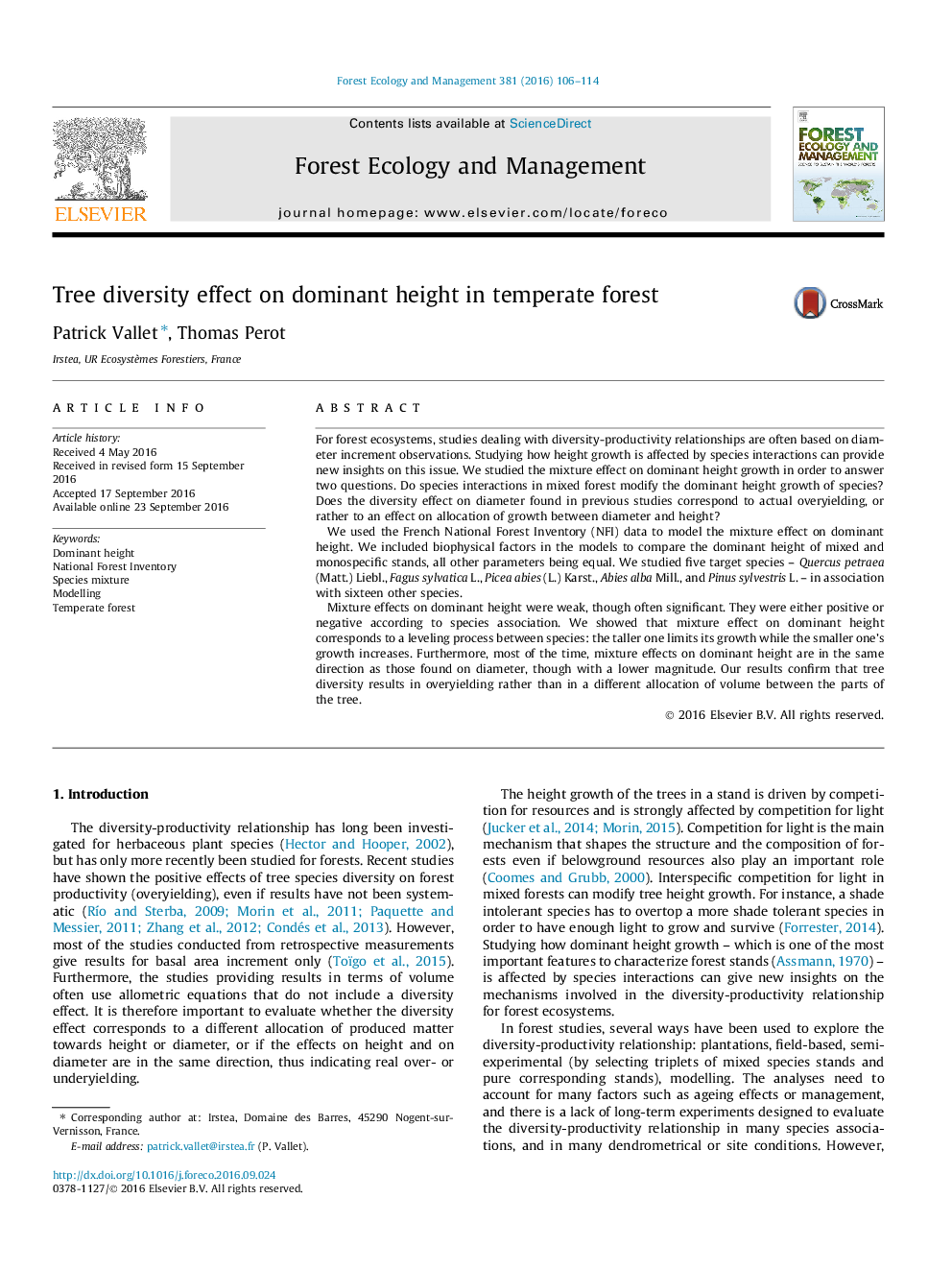| Article ID | Journal | Published Year | Pages | File Type |
|---|---|---|---|---|
| 6459546 | Forest Ecology and Management | 2016 | 9 Pages |
â¢Dominant height models were developed for 5 European temperate tree species.â¢Magnitude of the mixture effect on dominant height is low.â¢Mixture effect on dominant height depends on height differences between species.
For forest ecosystems, studies dealing with diversity-productivity relationships are often based on diameter increment observations. Studying how height growth is affected by species interactions can provide new insights on this issue. We studied the mixture effect on dominant height growth in order to answer two questions. Do species interactions in mixed forest modify the dominant height growth of species? Does the diversity effect on diameter found in previous studies correspond to actual overyielding, or rather to an effect on allocation of growth between diameter and height?We used the French National Forest Inventory (NFI) data to model the mixture effect on dominant height. We included biophysical factors in the models to compare the dominant height of mixed and monospecific stands, all other parameters being equal. We studied five target species - Quercus petraea (Matt.) Liebl., Fagus sylvatica L., Picea abies (L.) Karst., Abies alba Mill., and Pinus sylvestris L. - in association with sixteen other species.Mixture effects on dominant height were weak, though often significant. They were either positive or negative according to species association. We showed that mixture effect on dominant height corresponds to a leveling process between species: the taller one limits its growth while the smaller one's growth increases. Furthermore, most of the time, mixture effects on dominant height are in the same direction as those found on diameter, though with a lower magnitude. Our results confirm that tree diversity results in overyielding rather than in a different allocation of volume between the parts of the tree.
Graphical abstractDownload high-res image (92KB)Download full-size image
